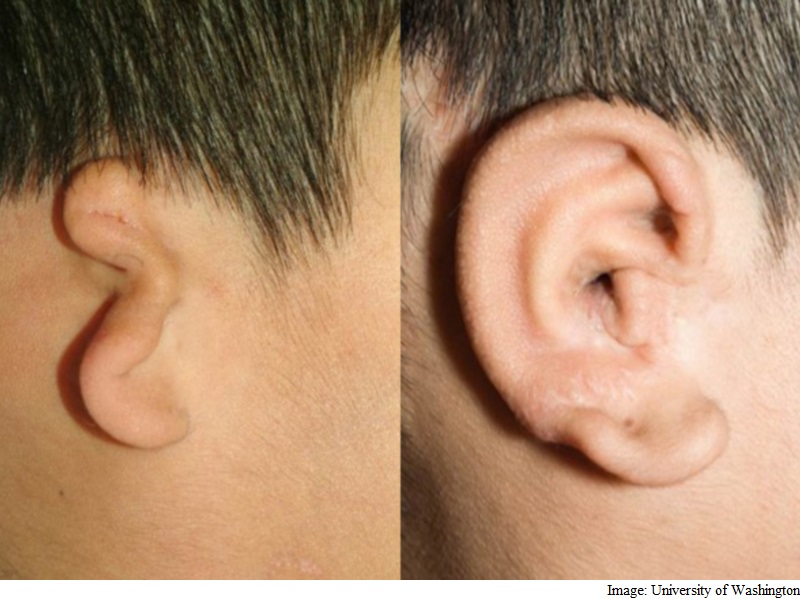- Home
- Science
- Science News
- Surgeons Carve New Ears Using 3D Printings
Surgeons Carve New Ears Using 3D Printings

To treat children with a missing or under-developed ear, experienced surgeons harvest pieces of rib cartilage from the child and carve them into the framework of a new ear.
They take only as much of that precious cartilage as they need. That leaves medical residents without an authentic material to practice on. Some use pig or adult cadaver ribs, but children's ribs are of a different size and consistency.
The innovation could open the door for aspiring surgeons to become proficient in the sought-after but challenging procedure called auricular reconstruction.
"It's a huge advantage over what we are using today," said lead author Angelique Berens, a UW School of Medicine head and neck surgery resident.
As part of the study, three experienced surgeons practised carving, bending and suturing the UW team's silicone models, which were produced from a 3D-printed mould modelled from a CT scan of an 8-year-old patient.
They compared their firmness, feel and suturing quality to real rib cartilage, as well as a more expensive material made out of dental impression material.
All three surgeons preferred the UW models, and all recommended introducing them as a training tool for surgeons and surgeons-in-training.
"It's a surgery that more people could do but they are hesitant to start because they've never carved an ear before," said Kathleen Sie, a UW Medicine professor of head and neck surgery.
Another advantage is that because the UW models are printed from a CT scan, they mimic an individual's unique anatomy.
The findings were presented recently at the American Academy of Otolaryngology: Head and Neck Surgery conference in Dallas.
Get your daily dose of tech news, reviews, and insights, in under 80 characters on Gadgets 360 Turbo. Connect with fellow tech lovers on our Forum. Follow us on X, Facebook, WhatsApp, Threads and Google News for instant updates. Catch all the action on our YouTube channel.
Related Stories
- Samsung Galaxy Unpacked 2025
- ChatGPT
- Redmi Note 14 Pro+
- iPhone 16
- Apple Vision Pro
- Oneplus 12
- OnePlus Nord CE 3 Lite 5G
- iPhone 13
- Xiaomi 14 Pro
- Oppo Find N3
- Tecno Spark Go (2023)
- Realme V30
- Best Phones Under 25000
- Samsung Galaxy S24 Series
- Cryptocurrency
- iQoo 12
- Samsung Galaxy S24 Ultra
- Giottus
- Samsung Galaxy Z Flip 5
- Apple 'Scary Fast'
- Housefull 5
- GoPro Hero 12 Black Review
- Invincible Season 2
- JioGlass
- HD Ready TV
- Laptop Under 50000
- Smartwatch Under 10000
- Latest Mobile Phones
- Compare Phones
- Redmi Note 15 5G
- Redmi Note 15 Pro 5G
- Redmi Note 15 Pro+ 5G
- Lava Play Max
- Poco C85 5G
- Honor Magic 8 Lite
- Jolla Phone
- Realme P4x 5G
- Asus ProArt P16
- MacBook Pro 14-inch (M5, 2025)
- OnePlus Pad Go 2
- Poco Pad M1
- Just Corseca Skywatch Pro
- Honor Watch X5
- Acerpure Nitro Z Series 100-inch QLED TV
- Samsung 43 Inch LED Ultra HD (4K) Smart TV (UA43UE81AFULXL)
- Asus ROG Ally
- Nintendo Switch Lite
- Haier 1.6 Ton 5 Star Inverter Split AC (HSU19G-MZAID5BN-INV)
- Haier 1.6 Ton 5 Star Inverter Split AC (HSU19G-MZAIM5BN-INV)
















